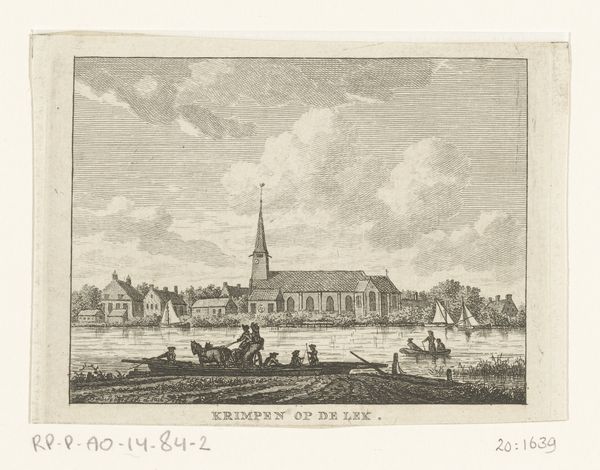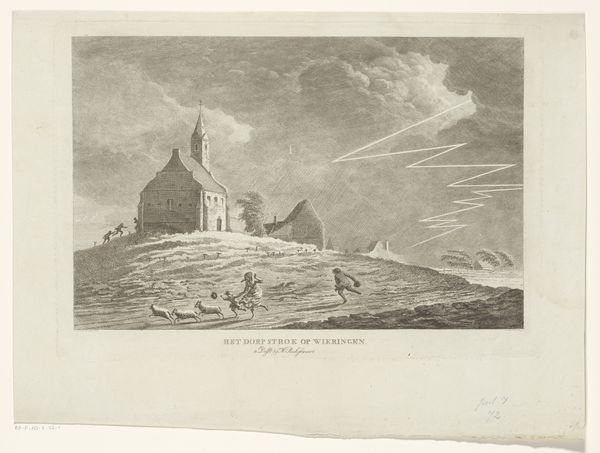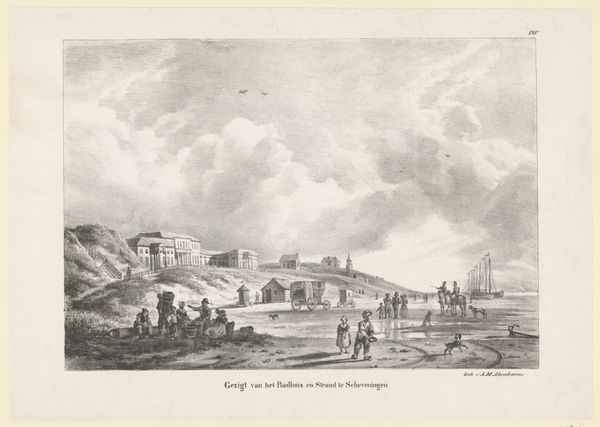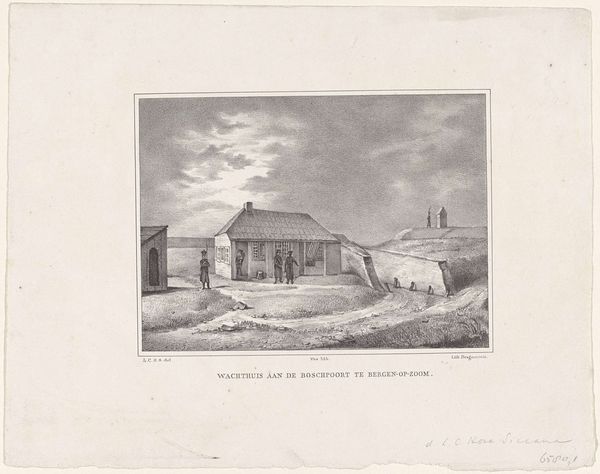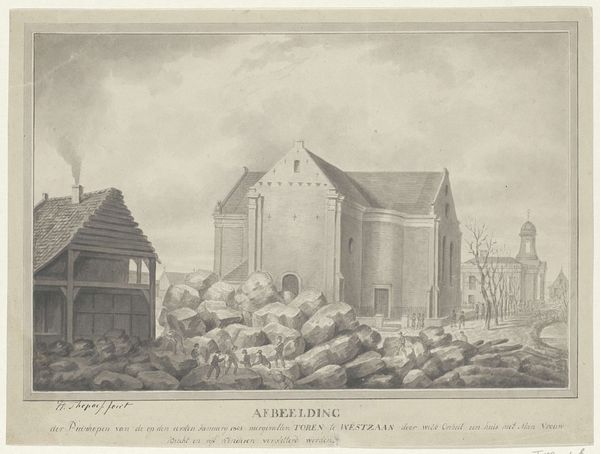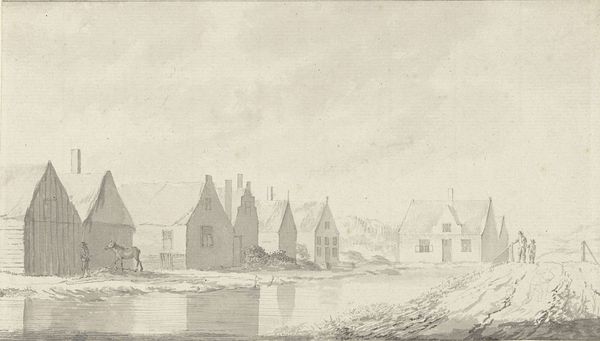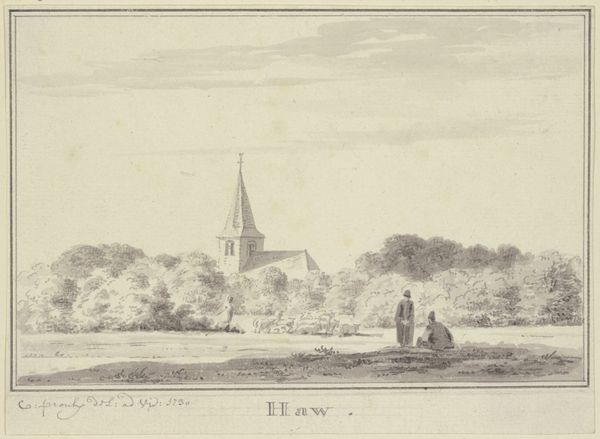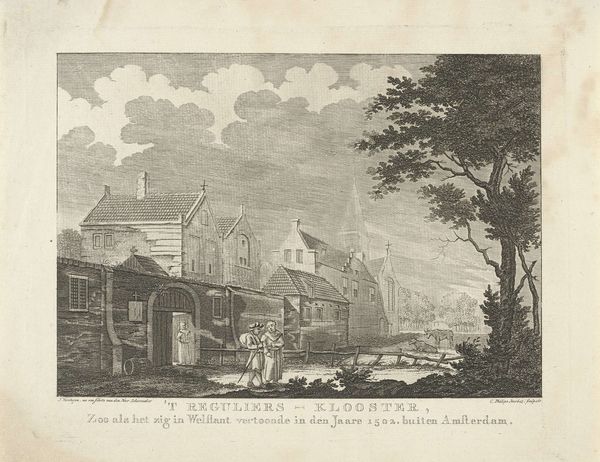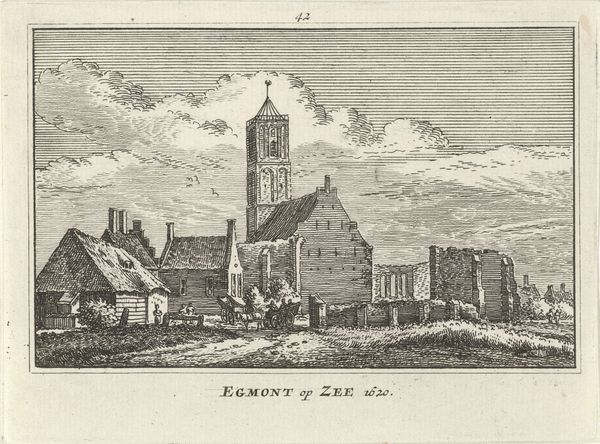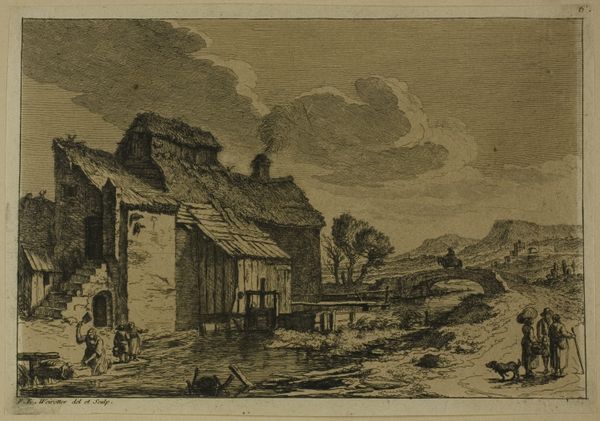
print, engraving, architecture
#
baroque
# print
#
landscape
#
history-painting
#
engraving
#
architecture
Dimensions: height 80 mm, width 100 mm
Copyright: Rijks Museum: Open Domain
Curator: Hendrik Spilman created this engraving, “Ruïne van de kerk te Egmond aan Zee,” in 1752, now housed at the Rijksmuseum. Editor: What a desolate scene. The ruin dominates the foreground, with jagged pieces scattered like bones across the landscape. The texture achieved through engraving creates such a sense of rawness and decay. Curator: Indeed. The crumbling church stands as a potent symbol of transience, of the inevitable decline that awaits even the most solid structures. Think about what a church represented in 18th-century Dutch society. Editor: An anchor, a pillar of communal identity, but here it is reduced to rubble. It's almost allegorical; the strict, rigid lines of the Baroque are yielding to entropy. The stark contrast between the detailed ruin and the more vaguely rendered background houses draws the eye relentlessly to the destruction. Curator: The choice to depict the scene in monochrome also emphasizes a feeling of somber reflection. It’s also not just about decay; consider the resilience implied. A ruin isn't merely an end but also a record, a cultural marker laden with narratives about time, loss, and endurance. The ruins carry an almost holy feeling with them, suggesting a phoenix could rise again, you know? Editor: You're right. There’s something quite beautiful about its decay, isn't there? The engraving style itself reinforces this. The precise lines detail the cracks and fractures, lending an almost tactile quality to the ruin, drawing our gaze intimately. Curator: Perhaps Spilman was aiming to stir a potent reflection on Dutch history, resilience, and identity amidst shifting political landscapes, presenting it all as a very material, grounded message for viewers. Editor: It certainly leaves one contemplating the inevitable transformations, and maybe even appreciating the beauty found within impermanence.
Comments
No comments
Be the first to comment and join the conversation on the ultimate creative platform.
